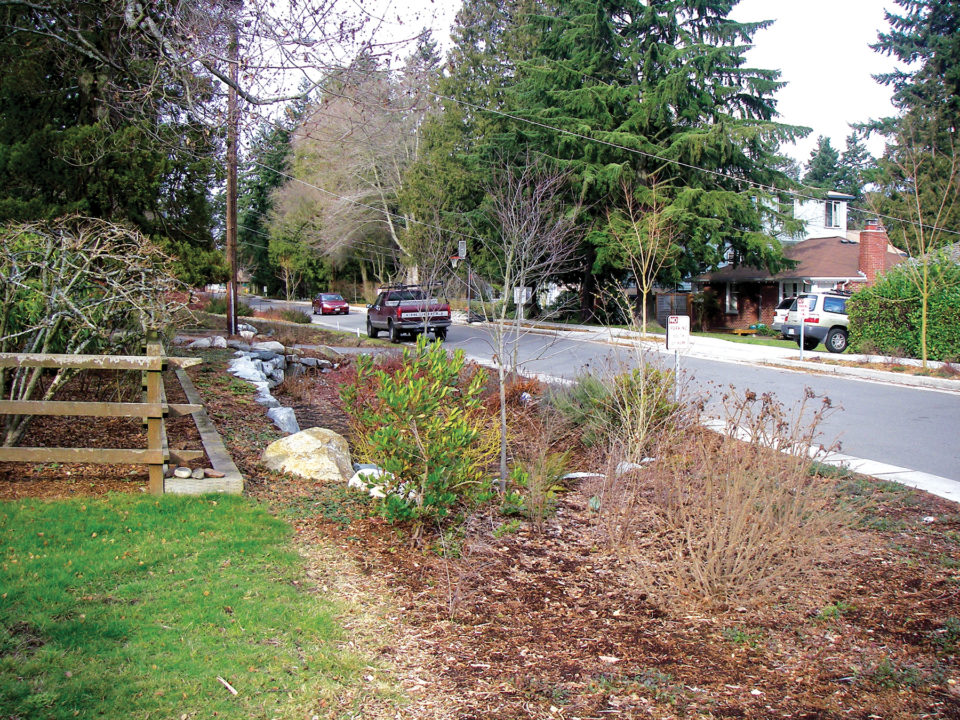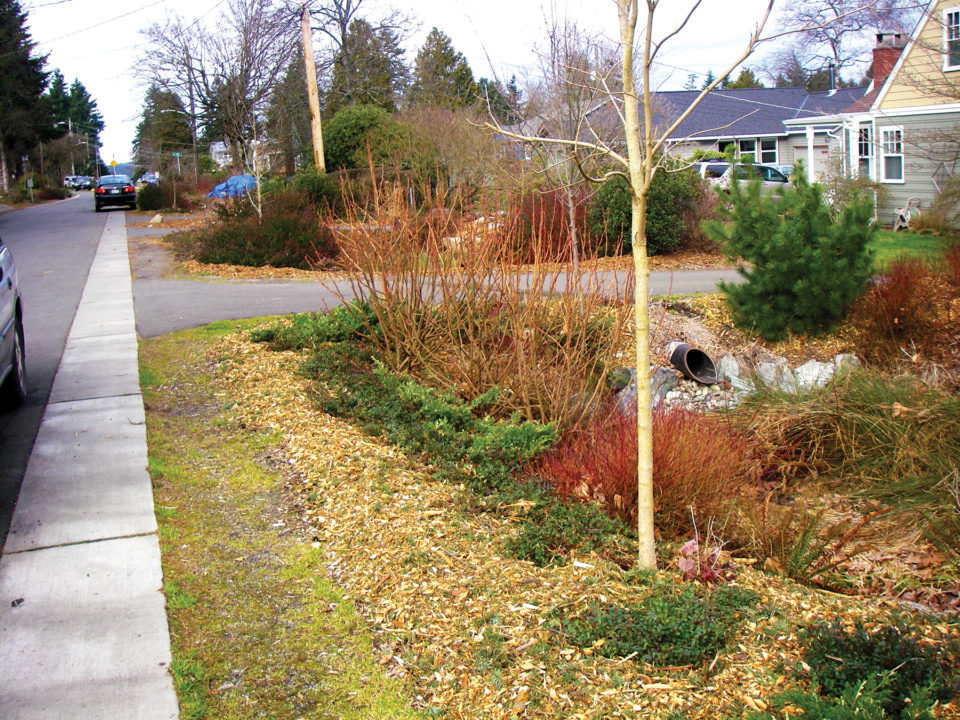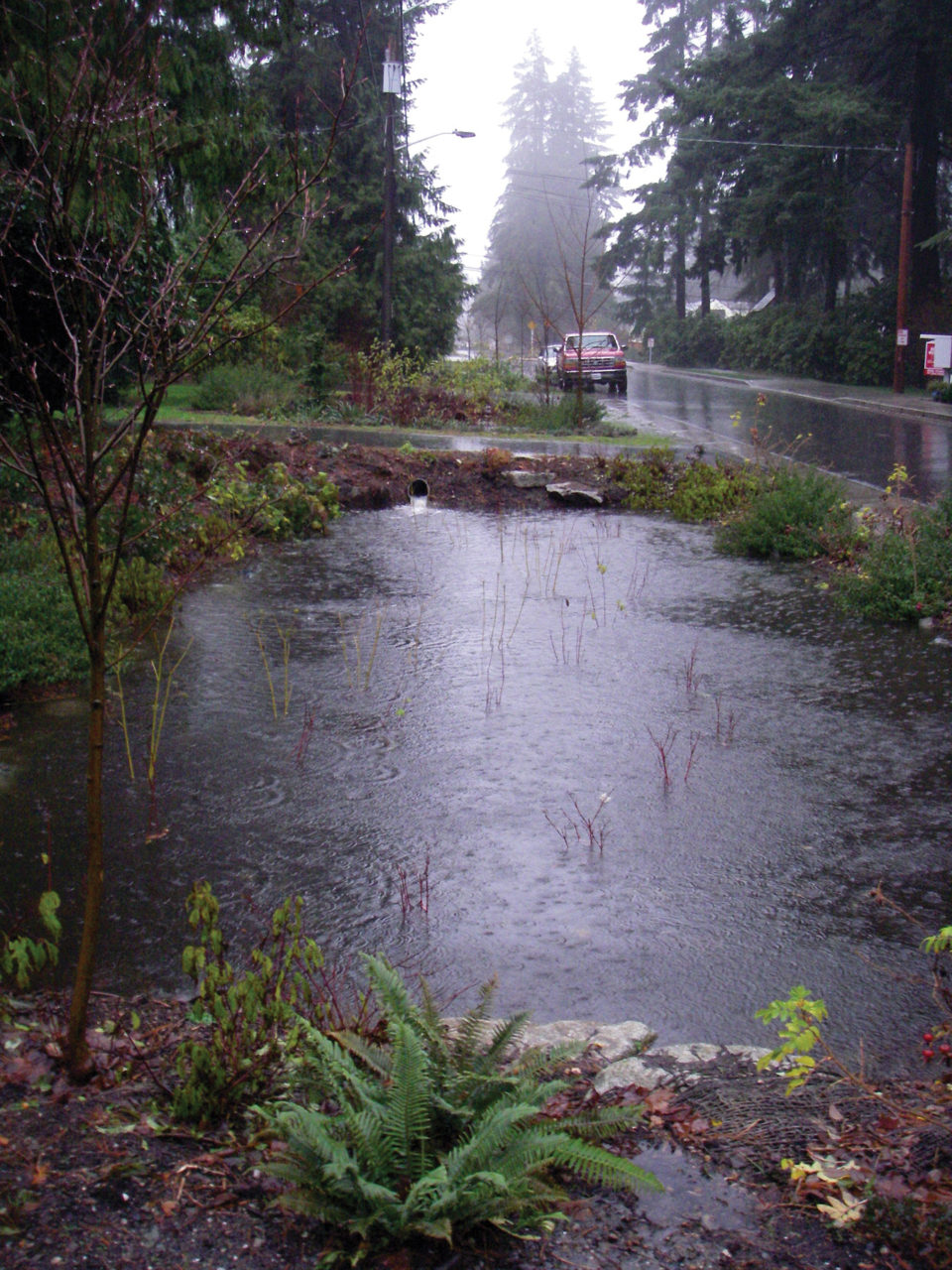
Pinehurst Green Grid (credit: Seattle Public Utilities)
Project Area: 49 acres / 12 city blocks
Contributing Drainage Area: 2.3 acres
Right of Way Width: 60 feet
Participating Agencies: Seattle Public Utilities
Timeline:
Preliminary Engineering, 2003 – 2004
Design, 2004 – 2005
Construction & Landscaping, 2005 – 2007
Cost: $4.6 million
(construction cost: $2.71 million)
Goals
Stormwater management: Manage stormwater runoff volume to a minimum of a 6-month storm event (1.08 inches in 24 hours), up to a 2-year storm event (1.68 inches in 24 hours). Eliminate spot flooding problems and provide local drainage conveyance.
Water quality: Meet the City of Seattle and Washington Department of Ecology water quality standards for the total drainage area.
Placemaking: Improve the Pinehurst neighborhood with attractive street paving, sidewalks, and landscaping.
Overview

Pinehurst Green Grid (credit: Seattle Public Utilities)
The Pinehurst Green Grid is a large-scale neighborhood natural drainage system treating a 49 acre drainage basin. The basin drains into Thornton Creek, a salmon-bearing urban creek. Located in a part of the city with unimproved right-of-ways, many streets had no curbs, no formal drainage infrastructure, and limited sidewalks.
The project re-aligned the road surface to one side of the right-of-way, adding a sidewalk on one side and large bioretention cells along the other side of the street. Parking was normalized to be restricted to one side of the street throughout the project area.
Lessons Learned
Look beyond the project area. The large bioretention cells installed in this project can handle runoff not only from the adjacent street and houses but from an area three to five times that size. The additional capacity allowed for a system that would accept runoff from cross streets and other nearby streets that therefore did not need reconstruction for bioretention facilities.
Take efficiency into account. The design of the Pinehurst Green Grid was more cost-effective than a similar project, Seattle’s Broadview Green Grid. The offset design of the Pinehurst project treats runoff from 49 acres, while Broadview, designed with a curvilinear street, treats runoff from 32 acres, for the same cost of $4.6 million.
Carefully establish level-of-service. Consider impacts on the environment, feasibility, economic and social impacts, benefits and costs, and geographic needs, while establishing the LOS needed for a street.
Outcomes

Pinehurst Green Grid (credit: Seattle Public Utilities)
Reduced runoff stormwater volume and peak flows during inundation events, and mitigated spot flooding within the project area.
Residents in the area have expressed appreciation for the aesthetic qualities of streets with natural drainage systems. The streets are favored places for neighborhood residents to take walks and are viewed as open space.
Water quality has been enhanced by a lower volume of stormwater leaving the site, and by biofiltration for excess stormwater that drains from the project area.